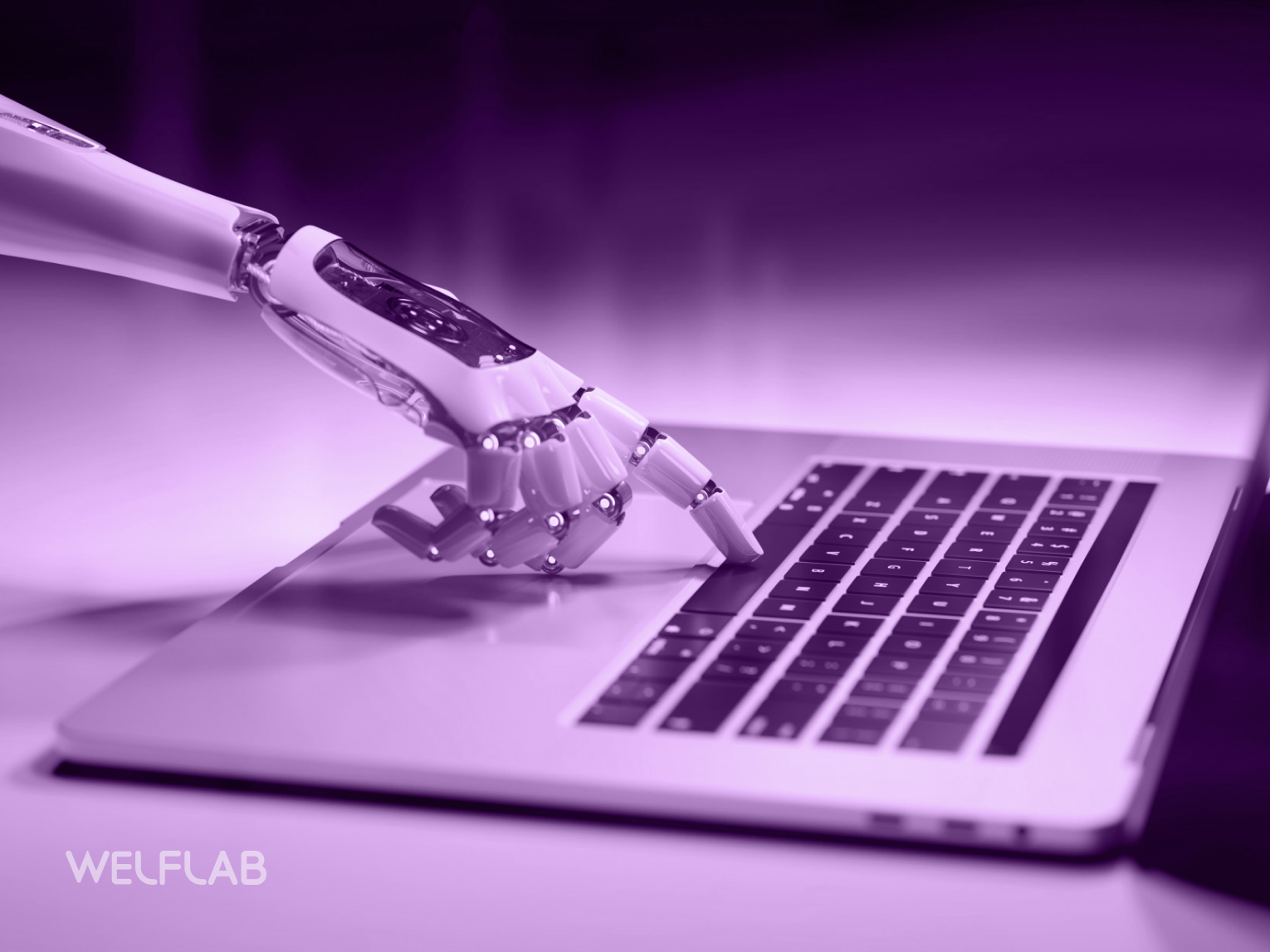An Introduction to AI and its Applications
To begin, it helps to understand the different types of AI that are available and what they’re capable of. Narrow AI focuses on single, specific tasks like computer vision or conversational abilities. In contrast, general AI would mimic human-level cognition across diverse problem-solving and reasoning abilities – though this has yet to be achieved. Within businesses, the most common applications of AI currently center around three areas: automation, analytics, and engagement. Automation employs AI and machine learning to handle repetitive administrative duties like data entry or invoice processing. Analytics utilizes AI to glean insights from vast troves of internal and external data. Engagement utilizes AI for conversational interfaces like chatbots and virtual assistants to interact with customers and employees.
Does it all seem complicated? While the technologies may appear daunting, implementing strategic automation does not require a massive overhaul or a big budget. Often, small pilots focused on quantifiable processes can demonstrate success and pave the way for gradual expansion. The key is understanding your organization’s unique workflows and priorities to determine the Low-hanging fruit where AI can make an impact.
Consider AI to Streamline Processes and Free Up Resources
One of the biggest benefits of AI-assisted automation is how it allows human employees to redirect their focus onto higher-level, more engaging work. When routine jobs are handled by AI systems, staff spend less time on repetitive tasks and data entry. This provides opportunities to tackle strategic initiatives, solve complex problems, and enhance customer relationships. Automation also brings greater efficiency, accuracy, and round-the-clock availability compared to manual processes dependent on human labor alone. AI ensures tasks are completed promptly with fewer errors to impact quality and turnaround times. The consistent handling of structured processes by AI systems further helps improve compliance.
Take invoice processing as an example. Having AI scan paper and digital invoices before extracting relevant fields can allow accounting associates to focus on exceptions, approvals, and analysis instead of wasting time on data entry. Similarly, chatbots answering basic support queries 24/7 reduce strain on live agent teams. With AI automating the foundational work, employees are equipped to spend more engaging time with clients.
Identify Opportunities for AI Automation Across +10 Functions
To streamline workflows at an operational level, it’s useful to audit processes across key business functions and pinpoint activities primed for AI-enabled automation. Some common applications include:
Customer Service
Chatbots, virtual agents, and knowledge base curation can automate a variety of customer service tasks. Intelligent chatbots are especially useful for answering common FAQs at any time of day, taking some pressure off live agents. Meanwhile, AI can organize disparate support articles and documents into easily searchable knowledge bases.
Marketing
Technologies like natural language processing and computer vision power new opportunities in marketing automation. AI is increasingly used to perform personalized outreach based on customer profiles and interactions. Social media monitoring with AI identifies trends and sentiments around brands and products in real time. AI lead scoring further analyzes incoming contacts to prioritize those most likely to convert.
Sales
AI plays a major role in sales workflows through the automation of routine jobs. For instance, AI can scan emails, calls, and deal attributes to identify patterns and forecast sales pipelines. This helps direct limited resources toward the hottest opportunities. Automated contract generation from CRM fields and approved templates further speeds closing cycles. AI-based opportunity analyses also flag risks and recommendations for accounted executives.
HR
Automating repetitive HR tasks with AI yields numerous advantages. Tools now actively monitor job boards and social profiles to source top candidates that match the criteria. During hiring, AI chatbots schedule interviews through natural language while screening questions identify red flags. For existing employees, AIStreamlines timesheets, payroll processing, skills gap analysis, and other paperwork-heavy chores.
Finance
Accounts payable, cash application, and invoice processing represent tedious yet important financial operations. AI applies machine learning to scanned documents, extracting key fields for automatic data entry and 3-way invoice matching. This reconciles documentation faster at scale while flagging outliers. For analysis, AI powers spend classification to oversee budgets in real-time or detect transaction patterns revealing leakage.
IT
A major application of AI in IT involves automating security, monitoring, and alerting on potential issues before they escalate. Machine learning models trained on event logs and configurations proactively recognize anomalies and vulnerabilities. Meanwhile, AI chatbots and virtual agents take the strain off service desks by autonomously responding to common user queries and support tickets regarding standard IT tasks.
Facilities
For facilities management, AI streamlines many space and asset-related workflows. Computer vision enables automatic room booking fulfillment by verifying availability and capacities in real time. Sensor-based systems leverage IoT to proactively trigger maintenance if equipment performance deviates from norms. AI tools further optimize utility consumption by detecting inefficiencies across energy usage, temperature zones, and consumption Benchmarks.
Supply Chain
Demand forecasting, replenishment, inventory optimization, and freight routing represent complex supply chain functions that benefit from AI. Machine learning algorithms analyze point-of-sale telemetry, lead times, seasonality patterns, and more to predict demands far more accurately than humans. AI thereby ensures right products are available in the right places and quantities.
Content Curation
AI supports the automation of content curation, organization, and discovery tasks. Natural language processing classifies documents while computer vision smartly indexes images, videos, and 3D assets. AI insights then fuel smart recommendations, personalized search rankings, and optimized knowledge base navigation tailored for roles, departments, or individual tastes.
Data Analytics
Leveraging AI, businesses can build dashboards and reports automatically. Machine learning continuously queries multiple data sources, identifies patterns across vast volumes, and generates updated visualizations on key performance metrics or sentiment trends. This AI-based self-service business intelligence empowers employees with real-time insights for optimized decision-making.
Communications
AI chatbots, virtual assistants, and virtual meeting systems take on administrative communications functions. Intelligent agents field routine internal queries, publish announcements, and coordinate calendars. AI also streamlines collaboration through automated meeting scheduling, note-taking, or transcribing. This shifts team focus toward more meaningful work versus repetitive coordination tasks.
Design/Creative
Even roles like design and creative content creation adopt AI for automation. Tools now generate initial wireframes, mockups or layouts from semantic requirements for review and refinement. AI also suggests design elements, color palettes or fonts for specified goals like increasing engagement or conversion rates faster than humans alone.
Pilot, Measure, and Scale Up Automation Projects
Rather than attempting one grand automation of everything at once, a phased approach through targeted pilots yields greater success. Start by selecting one well-bounded process and build out the minimum functionality required to test assumptions and measure outcomes. Focus on automating activities that offer strong quantitative metrics for evaluation, like capturing time savings or reducing errors. Maintain open communication to understand how implemented changes impact employees and operations.
Once a pilot proves its value, gradually expand the model to related areas and integrate learning along the way. Aim to automate 20-30% of a given function within the first year as initial proof of concept. Then identify the next cycle of processes primed for similar treatment. Over subsequent phases, automate 50-70% of the target domain to fully realize benefits at scale. Continuous assessment and refinement help maximize ROI while mitigating risks that come with major organizational shifts. Done right, strategic automation transforms workflows bit by bit for long-term productivity gains.
Invest in the Right Tools and Partner for Success
With the proliferation of AI technologies, choosing solutions suited to your specific automation needs and maturity can feel daunting. Expert guidance helps steer decisions around what tools are appropriate, and partners can shoulder much of the technical implementation burden. Look for automation platforms that provide no-code or low-code configurations for rapid process definition without requiring deep engineering resources. Consider offerings focused purely on automation versus broader enterprise suites to minimize costs.
Quality integration with existing systems also eases change management. Ensure your partner maintains strong relationships and certifications with major infrastructure providers in your technology stack. Their demonstrated success streamlining workflows for businesses of similar size and industry helps lower implementation risk. Finally, prioritize providers that offer ongoing support, rather than taking a one-and-done approach post-deployment. With the right tools and an experienced implementation ally, executing your automation strategy becomes much more attainable.
Last Thoughts
In summary, AI-driven automation provides a strategic approach to enhancing productivity when thoughtfully applied to repetitious, high-volume workflows. By focusing first on high-impact use cases, measuring outcomes, and scaling gradually, businesses can streamline operations in a controlled manner. With the right partner, implementing automation need not be an insurmountable challenge. At WelfLab, our team of experts helps evaluate processes, select ideal tools, and ensure frictionless rollouts – so you realize ROI from AI faster while minimizing disruptions to daily operations. Does exploring AI-assisted automation make sense for your business goals? Reach out and we can start a conversation.




